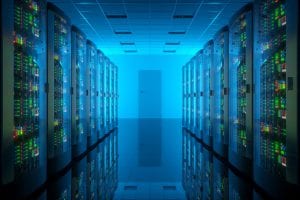 Temperature control is central to a data center’s efficiency. All types of server racks require some kind of cooling system, and when that system is not working properly, hot spots can develop. By understanding the cause of hot spots and how to address them, your data center can refine its network switch cooling solutions.
Temperature control is central to a data center’s efficiency. All types of server racks require some kind of cooling system, and when that system is not working properly, hot spots can develop. By understanding the cause of hot spots and how to address them, your data center can refine its network switch cooling solutions.
Why Do Hot Spots Develop In Data Centers?
Whenever a certain area of your data center gets too warm, it is usually because your cooling systems are not working as they should. This is often an airflow management issue, as the cold air may be leaking or reaching the areas of the center unevenly. If this is the case, the hot spots will likely show up in patches, representing the areas where the cold air is not reaching. Fortunately, there are specific steps you can take to address these problem spots.
How Can IT Managers Handle Hot Spots?
- Revamp Airflow: The best solution to better cooling your data racks is to improve your airflow management. Notice whether certain features are blocking air or whether the cooling systems are placed properly.
- Rearrange The Room: You may also consider completely switching around the server racks to optimize the space you have. Large and small data centers should not be arranged the same way, so keep this in mind.
- Remember The Floor Tiles: While you may be looking to the walls, cabinets, and ceilings to find inefficient airflow, remember to look at the floor. Tiles can be sneaky sources of air leaks and entrapments, so be sure to be mindful of this.
- Distribute Cooling Loads Evenly: Data racks with higher cooling demands should be evenly distributed around the room. Then the racks with less density in between should balance everything out.
- Implement Temperature Inspection: Once you improve your airflow management to minimize hot spots, remember to keep up with this temperature control. Frequent inspection will be necessary for preventing future problems.
Remember that your attention to detail will save your company money. Industry predictions show that electricity prices could go up 67% in the next three years, based on current prices and the carbon levy. By making your cooling system more efficient, you can cut this cost by 35%. So, even a small adjustment to your network switch cooling solution could be the answer to your data center needs.
